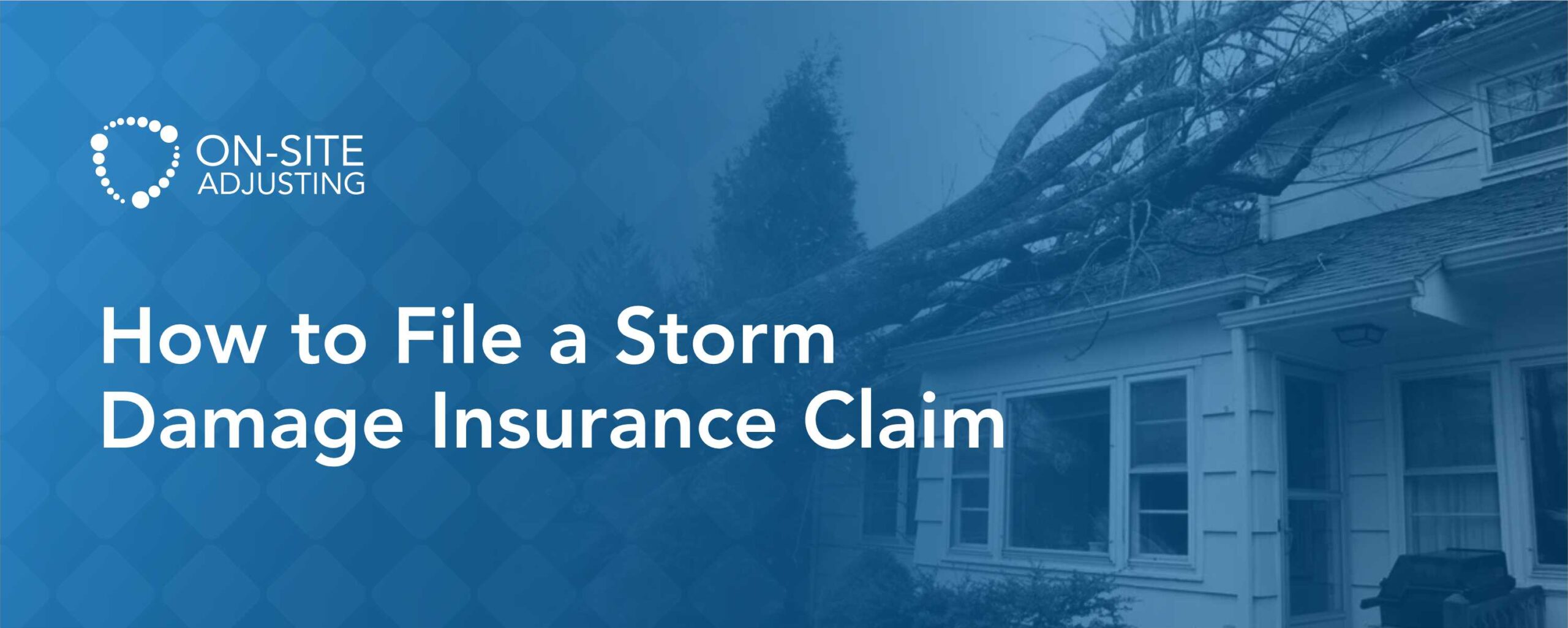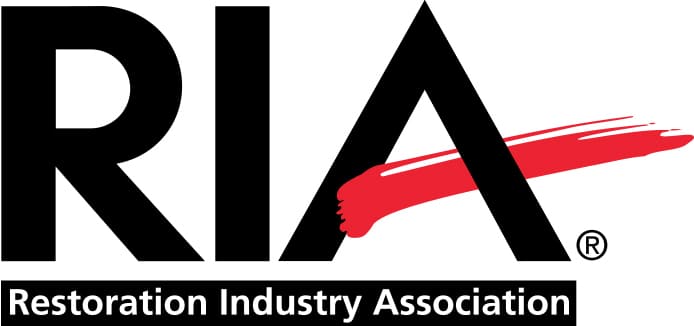
Storms often wreak havoc on homes, leaving behind costly damage. Having a damaged home can cause significant emotional turmoil. In addition to this, policyholders still need to navigate the claims process to receive financial compensation. This is one of the many reasons public adjusters exist. Hiring a public adjuster will take some pressure off your shoulders. Additionally, it will give you time to focus on healing.
In this post, we will break down the nitty-gritty of storm insurance claims. Learn what qualifies as a storm under insurance policies. Furthermore, we will provide a step-by-step guide on how to navigate the claims process.
What Is a storm in Insurance?

Before diving into the process, you should know how insurance companies define a storm. In insurance terms, a storm generally refers to severe weather events that result in damage. These events include thunderstorms, hailstorms, tornadoes, hurricanes, and windstorms. A storm typically involves high winds, precipitation (rain, hail, or snow), and sometimes lightning or floods. Each policy defines a storm differently. Therefore, you should review your specific policy to understand what types of storms it covers.
Most homeowners’ insurance policies cover storm damage. However, they often exclude specific natural disasters like floods or earthquakes. These events may require additional coverage, such as flood or earthquake insurance. This is especially so in areas that are prone to these events.
How to File a Storm Damage Insurance Claim
Filing a storm damage claim doesn’t have to be stressful. You just need the right tips and tricks and also, follow the process. The sooner you act, the better the chances are of having a claim without issues.
Here’s a detailed guide to help you through each step of the process:
Step 1 – Assess the Damage and Document Everything
Step 2 – Hire a Public Adjuster
Step 3 – Review Your Insurance Policy
Step 4 – Notify Your Insurance Company
Step 5 – Secure Temporary Repairs and Prevent Further Damage
Step 6 – Meet with the Insurance Adjuster
Step 7 – Negotiate the Settlement
Step 1 - Assess the Damage and Document Everything
The first step is to inspect your property immediately after the storm has passed. Ensure your safety before carrying out an inspection. Once it is safe, walk around your property and assess the extent of the damage.
After assessment, document the damage. Capture high-quality images and videos of all visible damage. Ensure you capture both inside and outside your home. Furthermore, create a list of damaged items. Include their approximate value and the type of damage. “Damaged items” should include personal property such as furniture and appliances. However, only include them if the storm was the cause of the damage.
If you have receipts or proof of purchase for any damaged items, keep them ready. This will help you evaluate your losses during the claim process.
Documenting the damage properly gives your insurer all the necessary information to evaluate your claim. Lack of sufficient documentation can result in delays or disputes. To make a proper inventory, try using Encircle.
Step 2 - Hire a Public Adjuster
Many people think filing a claim involves simply calling their insurance company. However, it’s highly recommended to hire a public adjuster first. A public adjuster is an independent professional who works on your behalf. Therefore, they have no affiliation with the insurance company. Public adjusters play several roles that all contribute to your claim’s overall success. They assess the damage and prepare any necessary documents. Additionally, public adjusters negotiate with your insurer to get you the maximum payout.
Insurance adjusters may undervalue your claim to save money. However, a public adjuster works to ensure you receive the full value of the damage. Furthermore, they have an expert understanding of insurance policies. Thus, they can help you avoid pitfalls that could cause delayed or denied claims.
Although public adjusters charge a fee, it is usually a percentage of your claim payout. This means they have an incentive to get your insurer to increase your settlement.
Step 3 - Review Your Insurance Policy

Before contacting your insurance company, take time to review your homeowner’s insurance policy. Be sure you understand your storm damage coverage, as well as any exclusions. Some policies exclude certain types of damage, such as floods.
Pay close attention to your deductible. Know how much you’ll need to pay out of pocket before your insurance kicks in. Storm-related deductibles are sometimes higher than standard deductibles.
Furthermore, check the maximum amount your policy will pay for storm damage. If your damage exceeds this amount, you’ll be responsible for the difference. Understanding your coverage helps set realistic expectations and ensures you don’t miss any critical details in your claim.
Step 4 - Notify Your Insurance Company
Once you’ve documented the damage and hired a public adjuster, notify your insurance company as soon as possible. The sooner they know about the claim, the faster they can begin the process. You can file claims over the phone, through an app, or on their website. Your insurance company will guide you on what steps to take.
When you contact your insurer, provide them with a detailed explanation of the storm damage. Also, let them know a public adjuster will be working on your behalf. Ask them about the specific process for filing a storm damage claim. Additionally, be sure to request a claim number and write down any important dates. This will make it easier for you to track your claim.
Step 5 - Secure Temporary Repairs and Prevent Further Damage
You may need to make temporary repairs to prevent further damage to your property. Insurance companies expect homeowners to take reasonable steps to protect their property after a storm. For example, if the storm damaged your roof, you can cover it with a tarp. This will prevent water intrusion. Similarly, if you have broken windows, board them up to prevent rain or debris from entering.
When making temporary repairs, keep all receipts related to these repairs. Your insurance company may reimburse you for reasonable costs. However, you need to have proof.
Furthermore, avoid making permanent repairs until your insurance company approves your claim. Performing extensive repairs before approval can complicate your claim. Also, it can result in lower compensation.
Step 6 - Meet with the Insurance Adjuster
Once you’ve filed your claim, the insurance company will likely send their own adjuster to inspect the damage. The insurance adjuster works for the insurer and may not always act in your best interest. Therefore, you should have your public adjuster on-site during this inspection. Doing so can ensure the insurance adjuster doesn’t overlook anything.
Your public adjuster can also ensure that the insurance adjuster properly values all damage. The public adjuster’s expertise can further prevent the insurance adjuster from minimizing your claim. This is important because the insurance adjuster will recommend a settlement amount to your insurer.
Step 7 - Negotiate the Settlement
Once the insurance adjuster has completed their inspection, your insurance company will provide an initial settlement offer. In many cases, the first offer may be lower than expected. This is where your public adjuster’s expertise becomes invaluable.
The public adjuster will compare the insurer’s settlement offer with their own estimate of the damage. If the offer is too low, the public adjuster will negotiate to ensure you receive fair compensation. In most cases, insurance companies are open to negotiating. This is especially so if the public adjuster provides evidence supporting your claim.
Step 8 - Receive Payment and Begin Repairs
After negotiations, the insurance company will issue a payment based on the agreed settlement. You can now hire contractors to begin permanent repairs on your home. Be sure to choose reputable contractors. Hiring licensed and insured contractors ensures that your home gets standard repairs. Also, keep track of the progress and ensure the contractors complete repairs according to the agreed scope of work.
Step 9 - File a Supplemental Claim (if Necessary)
In some cases, you may discover more damage after repairs have begun. For example, a roofer may find structural damage that wasn’t visible during the initial inspection. When this happens, you can file a supplemental claim to cover the additional repairs.
To file a supplemental claim, document the new damage. Take photos and gather evidence of the newly discovered issues. Notify your insurance company immediately and provide them with all necessary documentation.
Your public adjuster can help with the supplemental claim process, ensuring it goes smoothly and that you receive compensation for the additional damage.
Why do Insurance Companies Decline To Insure Acts Of Nature?
Many people wonder why insurance companies hesitate to insure acts of nature, also called “Acts of God.” These are naturally occurring events that are outside human control. Examples are hurricanes, tornadoes, or floods. Therefore, they are unpredictable and can cause massive, widespread damage. Covering such large-scale disasters can be financially risky for insurers. This is because these events could result in multiple claims from a single area. Thus, their payout costs can increase dramatically.
To limit their financial exposure, insurers often exclude certain acts of nature from standard policies. Additionally, they offer separate policies with higher premiums for events like floods and earthquakes. This allows them to balance risk while providing coverage for more common weather-related damage.
Conclusion
Filing a storm damage insurance claim involves several detailed steps. However, the key to success is acting quickly and staying organized. Discussing with a public adjuster straightaway helps quicken your claims process. Furthermore, it shows that you are proactive about your claim.
You don’t have to handle everything on your own. Let a professional deal with the insurance company. On-Site Adjusting is a reputable and professional adjusting company. Let us have a look at your case today and make your claim stress-free.












